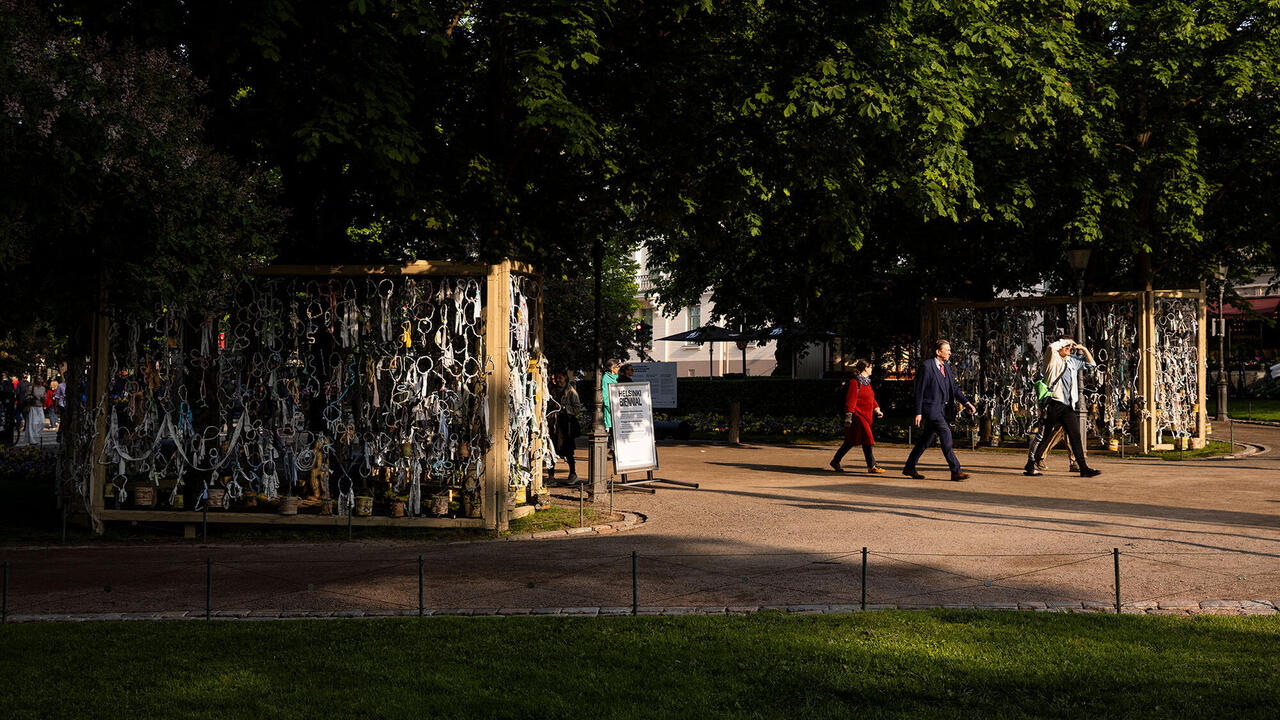Corridor Plateau III
Drei
Drei

The title of Corridor Plateau III, the third show in a series curated by the artists Christian Freudenberger and Markus Karstieß, after Detlef Weinrich’s 2011 audio recording of the same name, suggested two ideas. On the one hand, that the exhibition borrows the logic of the corridor: a narrow, linear space of passage. The plateau, on the other hand, suggests a point of stabilization, a level, to use the Deleuzian description, without ‘culmination’. On a plateau, things happen without real direction or end. Here was an exhibition that purported to be both and multiplicitous – teleological and lacking orientation, finite and eternally in flux. This, of course, is quite a claim: to make visible simultaneously the rabbit and the duck. The odd thing was that, by and large, it worked.
Distributed over three adjoining rooms, one of which was magically connected through a cupboard, were works by 12 more or less contemporary artists, among them Michael Bauer, Hannah Höch, Alex Jasch, Konrad Klapheck and Victor Vasarely. At first glance, these works had little in common, as both their styles and adjectives varied. Works from the 1970s to the present featured and accordingly the context of the exhibited works changed from piece to piece. Alexandra Hopf’s avant-gardiste posters, carrying titles such as The Optimal Unconscious (2010) and Unbuilt Future (2010), conferred a register that had little in common with Karstieß’s polychrome pottery series Stoner (2013), whose oily, frothy, amoebaean aesthetic was reminiscent of the sculptures of Louise Bourgeois. Similarly, there were few parallels between the sturdy, figurative, human-size cement and foam sculptures of Alex Jasch (Untitled, 2005) and the romantic conceptualism of a Markus Saile painting (Untitled, 2013). Indeed, there was even an objet trouvé among the works: an odd, cave-like oil painting.
What was remarkable, then, was that the curators had grouped these works casually and without further explanation – no wall texts, no additional notes. The loud poster The Optimal Unconscious was hung next to the amboebaean pottery, while the sturdy cement sculptures were positioned squarely in front of the conceptual paintings. In addition, few of the works were installed in the conventional way. A Vasarely silkscreen (Koska-Vall, 1982) was hung impractically, unflatteringly above the cupboard entrance, while a Christian Freudenberger print (Untitled, 1978) was tucked midway between a wall and a boarded up window. Other pieces were put on the floor, leaning against the wall, or laid loosely on chairs, almost as if the curators had abandoned them halfway through the installation. Everything here seemed intended to confuse: it is up to you, visitor, the setup said, to put things together.
However, the show began to come together. Not in the standard way of making sense, of telling a particular kind of story – or even, conversely, of telling no story at all. But in another sense. Certain works related because of their form, others because of the materials employed. There were works that engaged with each other because of colour (whites, oily palettes), topic (utopia and dystopia), or reference (digs at Benjamin and Freud). Instead of one narrative, a plethora of potential narratives unfolded. Narratives that were unclear, unstable and incoherent. Corridors, linear stories were suggested, but in the manner of the plateau: bouncing off of each other, moving without clear orientation. But moving nonetheless.
















